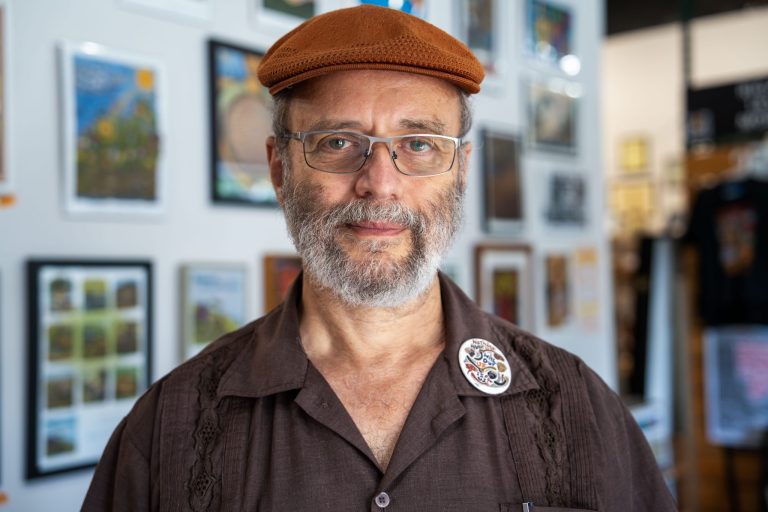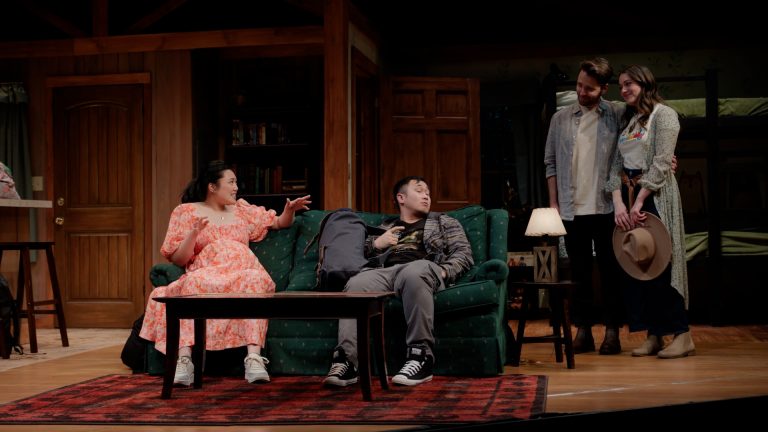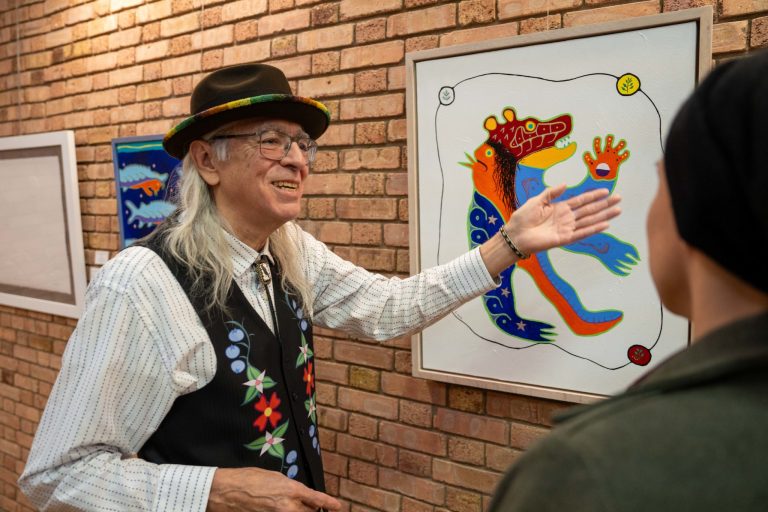Bog Walk from Works Progress on Vimeo.
Artist Christine Baeumler wants us to get our feet wet. When we approached her about creating a short video for McKnight’s State of the Artist project about her and her recent work, she suggested we take a walk together. On one of the hottest days of the summer we followed Christine into a rare patch of tamarack bog located about an hour north of the Twin Cities. While standing on a wooden plank that spanned a spongy clearing, water slowly seeping into our shoes, we asked her to tell us what was behind her attempt to reconstitute such an uninhabitable landscape.
“I’m intrigued by landscapes that people consider not useful or uninhabitable. By thinking about these places and investigating what they do provide to other species, and what they provide as an ecological function, maybe we can expand the ways we inhabit a place.”
Ecology and the value of natural places are just two of the ideas that led Christine Baeumler to create an unlikely installation on the roof of the Minneapolis College of Art and Design: a real and functioning tamarack bog. But rather than thinking of this bog as a thing set apart, her interest was in bringing this unfamiliar landscape closer to her urban neighbors.
“I’ve been drawing increasingly from a kind of surrealist approach to art. I think with the bog and other projects I’m really trying to arrest people’s attention for a moment, whether through an aesthetic shift or something that is unusual or unexpected, and in that way, drawing attention to these systems that are largely unseen.”
As we spent more time with Christine, we learned that systems are an important part of how she sees the world and her artistic work. As an environmental and public artist, Baeumler often blends art and natural science, adding in equal parts design, engineering and public engagement. Though her artistic training as a landscape painter continues to inform her large-scale installations, creating actual functioning landscapes for people to engage is a very different task. More than just realizing her own artistic vision, this work requires collaboration (her partnership with Kurt Leuthold and Fred Rozumalski from Barr Engineering is featured heavily in this film), experimentation, and an understanding of the complex systems that make a city and a natural landscape function.
“Can art really inspire behavioral change? I think that may be even more challenging than creating changes in infrastructure, or changes in the way we approach city systems. How can artists participate in the process to motivate people to have significant behavioral changes in their own lives?”
At the end of the day, Christine’s own process raises more than a few questions about the potential role of artists to not just represent and engage landscapes and ecological issues, but to intervene, and to begin modeling new solutions and systems. It’s an ongoing experiment, one that we believe other artists can relate to, even if their chosen medium is not a living one.
What do you think? How are public artists inspiring changes in systems, be they natural or built, civic or at the level of individual behavior?
If you feel inspired to visit a bog habitat this fall, look no further than Minneapolis’ own Theodore Wirth Quaking Bog. A floating dock over an acid moat grants you access to 200 mature tamarack trees shading a 5 acre sphagnum moss understory. If you’re lucky, you might even meet the dragonfly featured at the end of our film.
Shanai Matteson and Colin Kloecker are Collaborative Directors of Works Progress, an artist-led public design studio. Works Progress creates collaborative art and design projects that inspire, inform and connect; catalyzing relationships across creative and cultural boundaries; and providing new platforms for public engagement. You can find them on Twitter at @works_progress.




